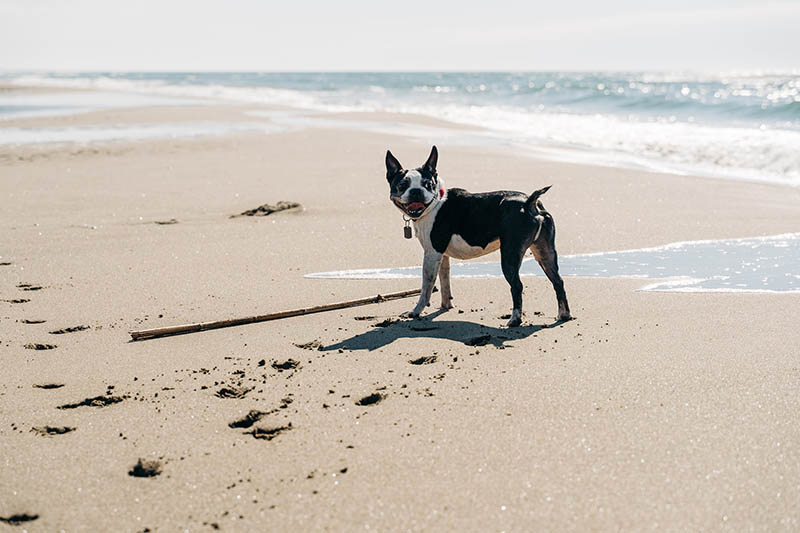10 Incredible Tibetan Mastiff Facts You’ll Love to Learn

Updated on
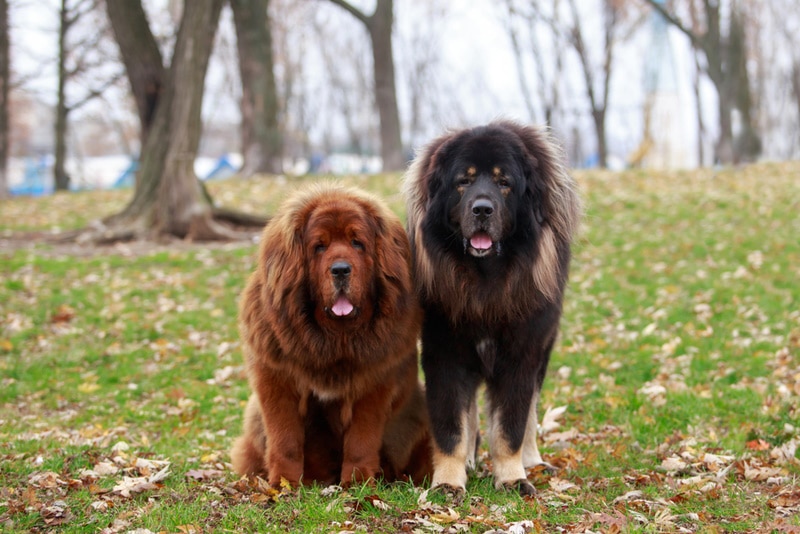
The first thing you will notice about a Tibetan Mastiff is its immense size. In fact, they are one of the most powerful dogs in the world. While you may briefly mistake spotting this canine for a lion, you will know one when you see one.
They originated from Tibet in East Asia and are an ancient breed known for their role as mighty guardians. The history of the Tibetan Mastiff is as aloof as their temperament, but there are several fascinating tales about them. Read on to discover 10 incredible facts about the majestic Tibetan Mastiff.
The 10 Amazing Tibetan Mastiff Facts
1. The Tibetan Mastiff is One of the Oldest Dog Breeds
As one of the world’s oldest breeds, the Tibetan Mastiff is thought to have originated in Tibet. However, very little is known of their past. They served as watchdogs for Tibetan monasteries as well as guard and herding dogs for nomads for thousands of years. They held off hungry wolves and snow leopards that were about to help themselves to the yaks on the Himalayan Mountain tops.
The Himalayas include Stone Age cave paintings that demonstrate the existence of this lion-like dog’s relatives, dating back thousands of years.
2. They Are Most Active at Night
Tibetan mastiffs are typically most active at night. Much like they share physical characteristics with giant wild cats, they also share their night owl qualities but are more protectors than predators. Because they were bred as guardians of the Tibetan monasteries and their herds, they would instinctually be on guard during the night.
This is something to bear in mind when considering adopting one. While you are settling in for the night and switching off from your busy day, they are more alert and getting ready to do their work. They are incredibly protective and bark loudly if they observe a potential threat.
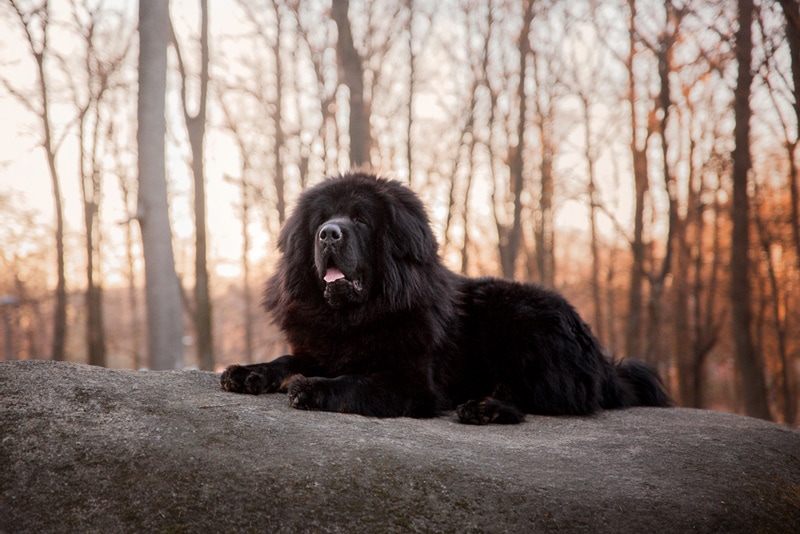
3. Despite Their Thick Coat, Tibetan Mastiffs Don’t Shed All Year
The coat of a Tibetan Mastiff is one of their distinguishing attributes. Their coat is thick, dense, and double-layered, consisting of a coarse top coat and a soft and wooly undercoat. Despite that, their grooming needs are relatively minimal most of the year. They go through a prolific shedding once a year when they blow their coat in late summer.
Their grooming needs will require weekly brushing to keep their coat looking gorgeous, and during their shedding season, a de-shedding tool can be used.
4. They Can Survive at High Altitudes
Tibetan Mastiffs were mighty guardians of the Himalayas and can therefore survive at high altitudes in the thin mountain air, which is difficult for most other canines. They can thrive at elevations of about 16,000 feet.
According to a recent study, they may have developed this skill through interbreeding with gray wolves that were already able to reach such heights more than 20,000 years ago. Interestingly, the same process for humans—interbreeding with now-extinct humans known as Denisovans—is how Tibetans acquired their high-altitude abilities.
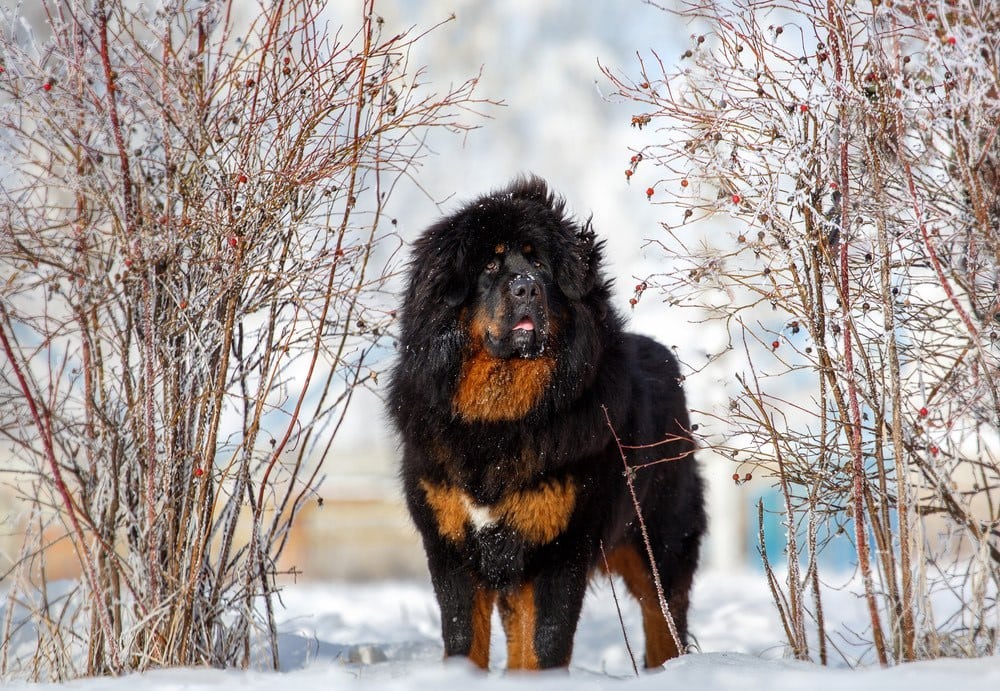
5. They Love the Cold
While some dogs cannot tolerate the cold, Tibetan Mastiffs love it. They can endure temperatures of 45°F to 32°F. They have an incredible double coat that can keep them insulated, and they enjoy playing in the snow.
However, they do have limitations. Temperatures below 20° can be dangerous for dogs, so it’s best to keep them indoors if the temperatures reach that low.
6. Despite Being Ancient Dogs, Tibetan Mastiffs Were Only Recognized by the American Kennel Club (AKC) in 2006.
The Tibetan Mastiff is one of the oldest breeds in the world, despite being a relatively new breed to the AKC. The AKC added the dog to the Working Group in 2006. The “big dog from Tibet” was given the name Tibetan Mastiff for the first time in the AKC original categorization.
Ann Rohrer, who founded the American Tibetan Mastiff Association, was employed by the US government in Katmandu in 1966. Her longstanding fascination with Tibetan breeds led her to give the Tibetan Mastiff Jumla’s Kalu a home.
Around 1970, more Tibetan Mastiffs were brought into America and were bred by devoted fanciers all around the nation. The 1990s saw a focus on expanding options to improve the breed type without compromising health and structure, as well as importing new breeding stock.
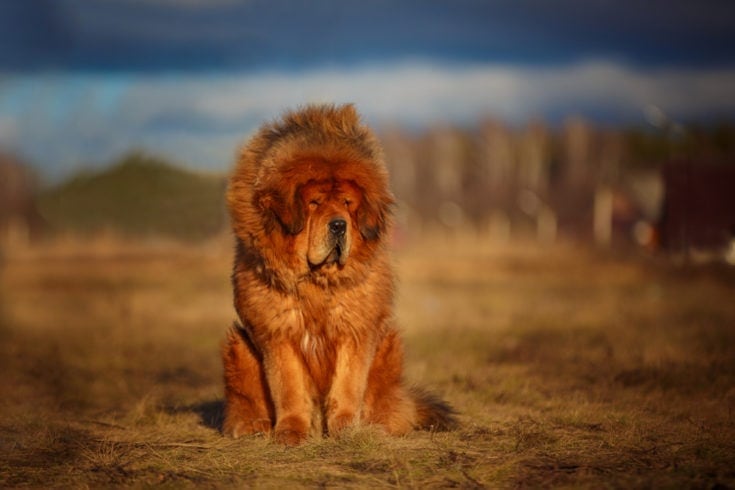
7. Tibetans Believe that Tibetan Mastiffs Have the Souls of Monks and Nuns Who Did Not Make it Into Shambhala.
Shambhala is known as a mythical paradise. It is Sanskrit for “place of serenity” or “place of silence.” Legend claims that only those who have attained enlightenment, or those who are pure in heart, can live there. The fabled Buddhist kingdom of Shambhala is a paradise where love and wisdom are supreme and where people are unaffected by sorrow or old age.
Tibetans believe the canines bear the souls of monks and nuns who were not virtuous enough to be reincarnated as humans or enter the celestial kingdom of Shambhala.
8. Tibetan Mastiffs Are a Status Symbol in China
According to legend, both Genghis Khan and Buddha owned Tibetan Mastiffs. Over the past decade, they have become a new status symbol for China’s expanding millionaire class and are treasured for their alleged ferocity. They are a very exclusive breed since they are so infrequently found outside of Tibet and China. They serve as a means of protecting the home and displaying one’s status and money.
A Tibetan Mastiff aged 3–4 months old is reportedly worth over 500,000 RMB ($78,000) in China. A rare Tibetan Mastiff was reportedly purchased by a coal billionaire from northern China for the absurd price of 10 million RMB ($1.57 million). A wealthy “princess” from Xian spent 4 million dollars on her Tibetan Mastiff and even had it flown home. She had lined up 30 Mercedes Benzes at the airport to greet the VIP canine guests.
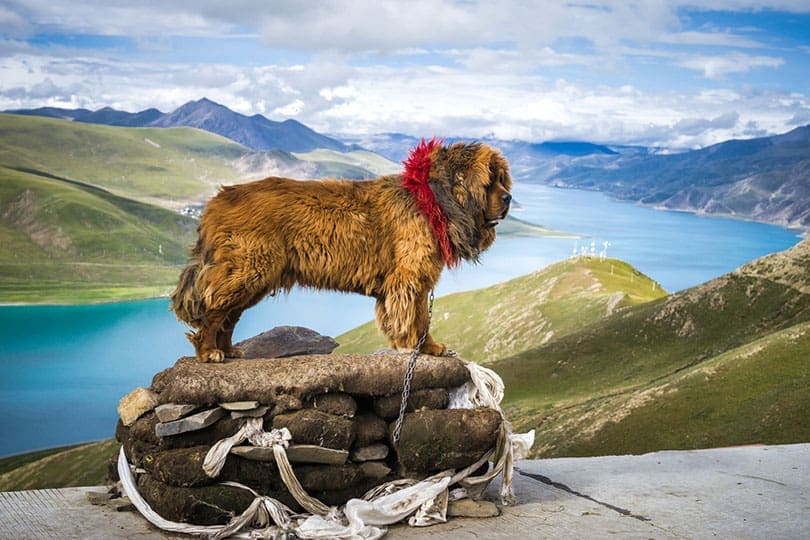
9. Tibetan Mastiff Puppies Mature Slower Than Other Breeds
The rate at which a puppy will mature will depend on many factors, such as breed, size, and socialization. In general, puppies become adult dogs between 1 and 2 years of age.
Tibetan Mastiffs typically mature slower than other breeds. Male Tibetan Mastiffs normally reach maturity at approximately age 4–5, while females reach maturity around age 3–4. A male Tibetan Mastiff puppy that is 6 months old typically weighs 55–85 pounds. In comparison, a 6 -month-old female Tibetan Mastiff puppy will normally weigh 40–60 pounds.
10. Despite Their Intimidating Size Tibetan Mastiffs Are Big Softies
Despite their immense size and commanding presence, Tibetan Mastiffs are known to be extremely sensitive animals around their human families. They are intelligent, self-reliant, and sensitive to human emotions. Family members are exempt from their aloofness, even though they are territorial with strangers. Overall, Tibetan Mastiffs can be wonderful pets, but they need a lot of training.

Conclusion
The Tibetan Mastiff is an ancient and powerful canine. The little bit of history we know is as fascinating as the breed itself. These majestic dogs are lion-like in appearance, but despite their intimidating appearance, they are gentle and loving and make great companions. Their history as guardians of Tibetan monasteries makes them loyal and amazing guard dogs, and their ability to withstand cold temperatures and high altitudes shows how rugged and resilient they are.
Featured Image Credit: Olga Aniven, Shutterstock

